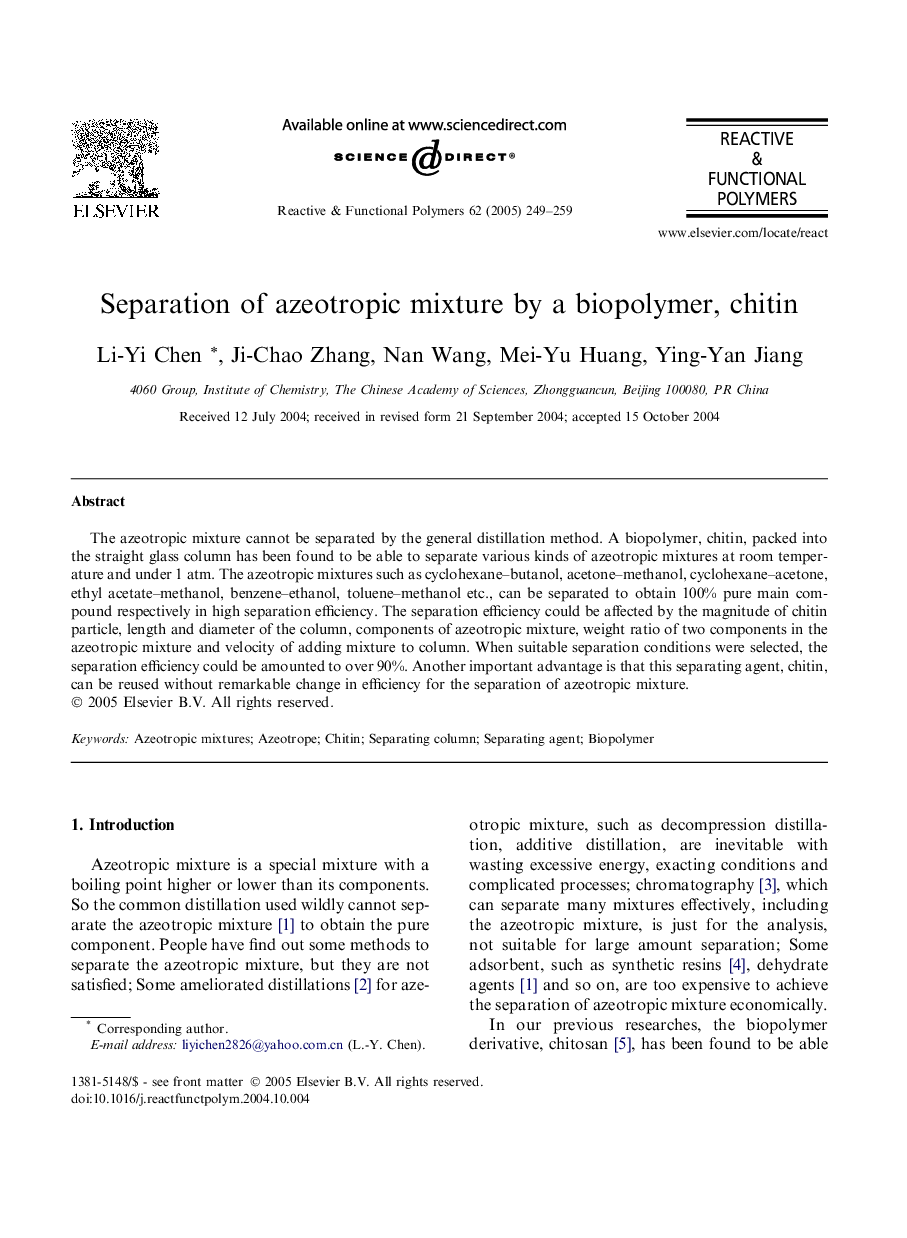| Article ID | Journal | Published Year | Pages | File Type |
|---|---|---|---|---|
| 9562580 | Reactive and Functional Polymers | 2005 | 11 Pages |
Abstract
The azeotropic mixture cannot be separated by the general distillation method. A biopolymer, chitin, packed into the straight glass column has been found to be able to separate various kinds of azeotropic mixtures at room temperature and under 1Â atm. The azeotropic mixtures such as cyclohexane-butanol, acetone-methanol, cyclohexane-acetone, ethyl acetate-methanol, benzene-ethanol, toluene-methanol etc., can be separated to obtain 100% pure main compound respectively in high separation efficiency. The separation efficiency could be affected by the magnitude of chitin particle, length and diameter of the column, components of azeotropic mixture, weight ratio of two components in the azeotropic mixture and velocity of adding mixture to column. When suitable separation conditions were selected, the separation efficiency could be amounted to over 90%. Another important advantage is that this separating agent, chitin, can be reused without remarkable change in efficiency for the separation of azeotropic mixture.
Related Topics
Physical Sciences and Engineering
Chemistry
Organic Chemistry
Authors
Li-Yi Chen, Ji-Chao Zhang, Nan Wang, Mei-Yu Huang, Ying-Yan Jiang,
